This past summer, Real Sociedad experienced some squad changes as tried and tested attackers departed, with Alexander Isak going to Newcastle United, Adnan Januzaj to Sevilla, Portu to Getafe on loan, and Willian José joining Real Betis. This saw plenty of new additions to the squad along with the continuation of Alexander Sørloth’s loan from RB Leipzig. The additions included the signing of 2004-born kid Mohamed-Ali Cho from Angers to enrich the offensive group.
As Isak left, someone had to fill in his position in the starting lineup and although Imanol Alguacil is yet to decide who should be his regular choice, Cho is a strong contender. The 18-year-old holds an English passport but plays for France U21. This season, he also got some time for Real Sociedad’s first team — and impressed many. This tactical analysis will give a clear detailed profile of Cho’s playing style, and how he fits under Alguacil’s tactics.
Data visualizations and analysis
First off, let’s address several data visualisations to observe Cho’s performance in the La Liga and UEFA Europa League season so far.
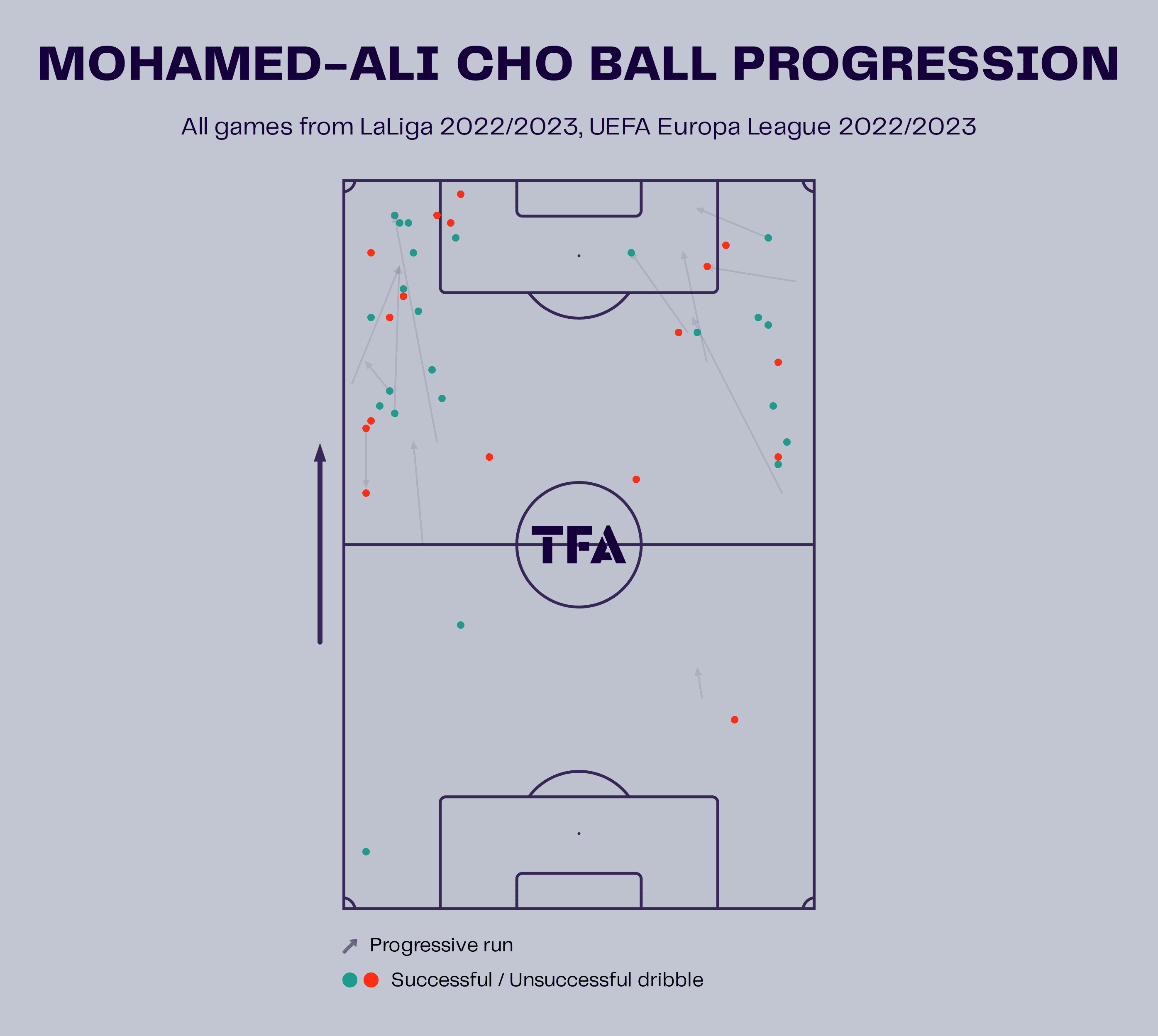
The first image shows Cho’s ball progression in the main competitions, where he’s been quite impressive and possessed the ability to bring the ball forward on both flanks. The progressive carries mostly occurred in wide spaces, but he almost had nothing in the centre of the pitch. The trends suggest he’s not a Jamal Musiala type of player who’s gifted to turn in pockets of space centrally, but something else which we will elaborate on deeper into this analysis.
Cho provided 11.29 dribbles/90 so far in the La Liga season with a success rate of 60.6%; he is very aggressive on the ball and willing to challenge the defender.
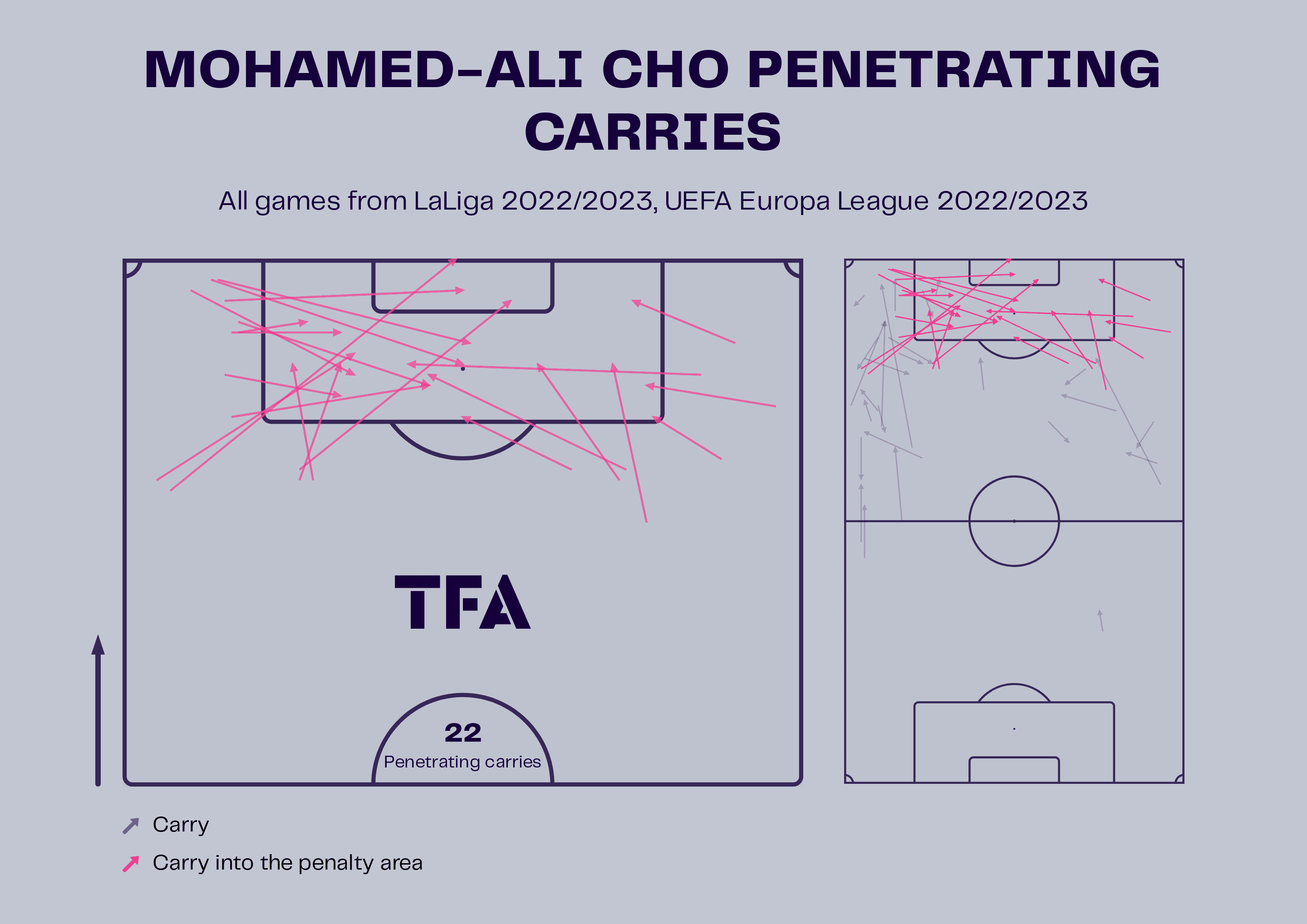
We’ll look at Cho’s penetrating carries via our next visualisation. In this image, all of his carries are highlighted, especially those towards the penalty area. Of course, it shows he can obtain the ball and drive into the box but, also, there is a tendency to attack more on the left. This partially comes down to his playing style but also his position in the team.
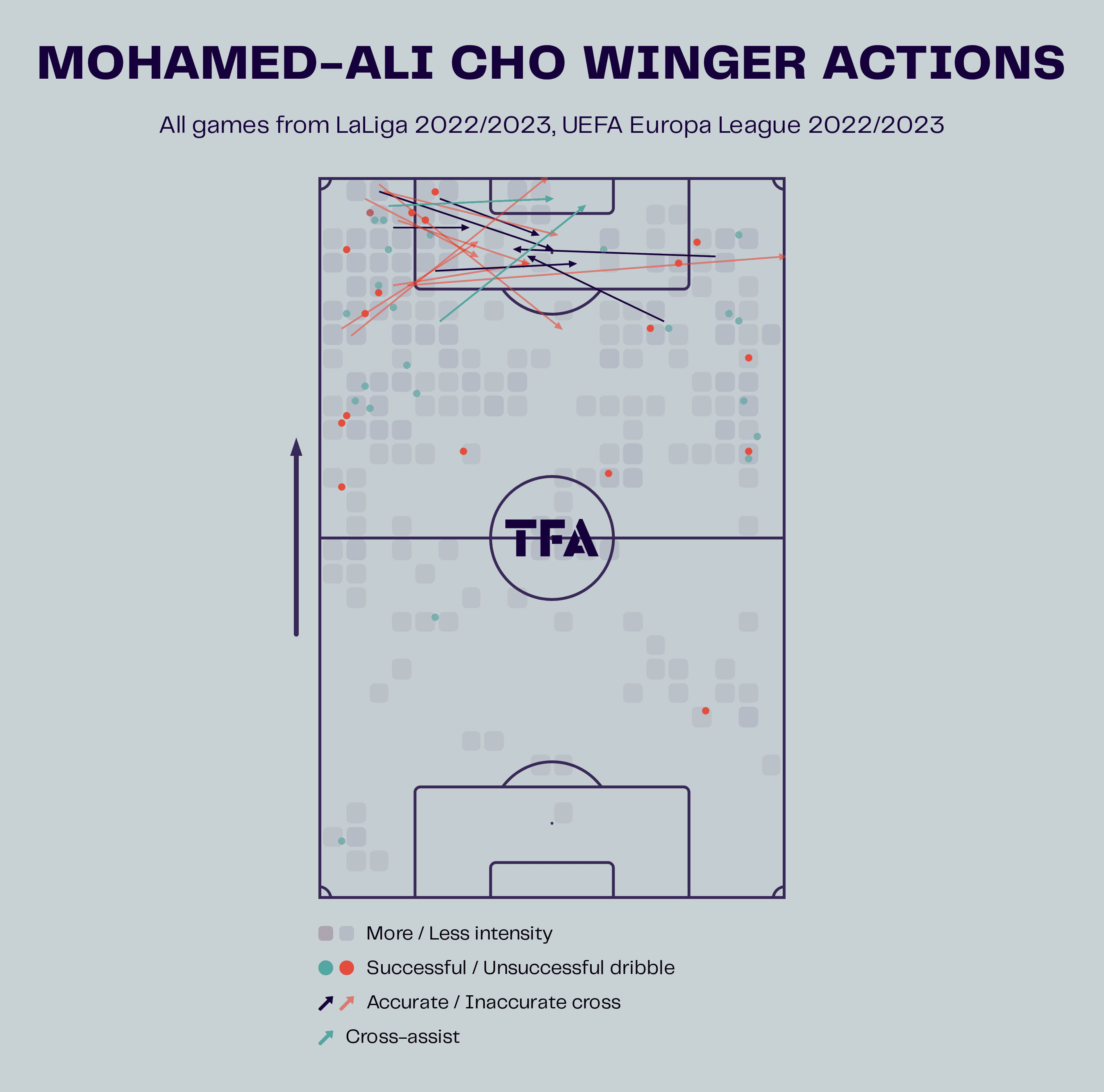
The last data visualisation shows all actions of Cho as a winger. This provides further proof of Cho’s preference for the left side over the right, as his heatmap is more intense on the left flank. His final deliveries are also demonstrated, including two of his assists which are marked green.
Pace and dribbling
As our data visuals suggest, Cho is very good on the ball, aggressive to attack the defender in 1v1s, and also provides some threats in the final third. But how does he do it? This section will give a detailed analysis of his dribbling skillset and show why this is his natural gift.
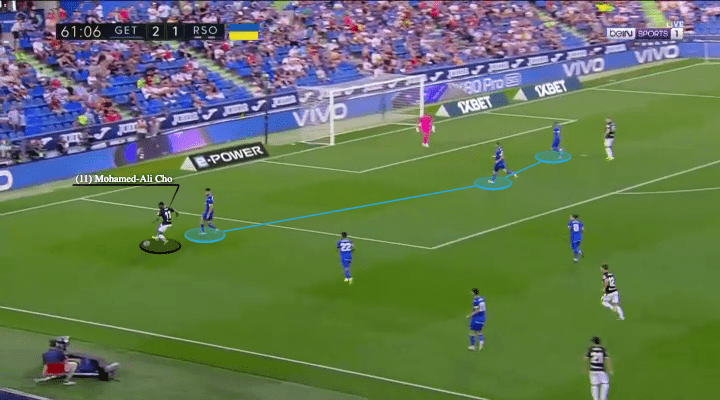
Although Cho is a flank player, he started out in Sociedad’s 4-D-2 as a striker. Alguacil did not restrict him in the 9’s position and let him do his own job. So there were quite a lot of occasions on which Cho received down the line, such as the first example here, where he also drew the Getafe central defender out of position.
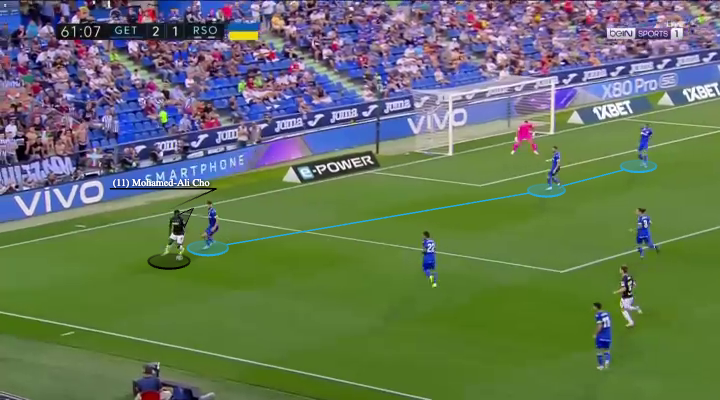
When he received it, the next action was not to immediately rush towards the byline and force a cross. Instead, he checked back to see if there was any teammate available around him. But there was another message in this check. He might have made the defender believe he was going to make an easy pass backwards because now Cho has turned his back to him and looked quite static during the check.
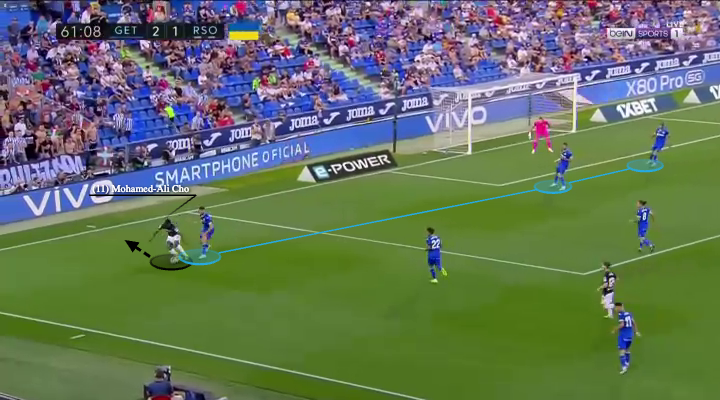
But that was a mental illusion! The Getafe centre-back got fooled by Cho and he switched off. Since Cho possesses great physical potential which allowed him to adjust the ball direction and his gravity in a slight action, instead of making an easy pass backwards, Cho suddenly shifted the ball to the byline.
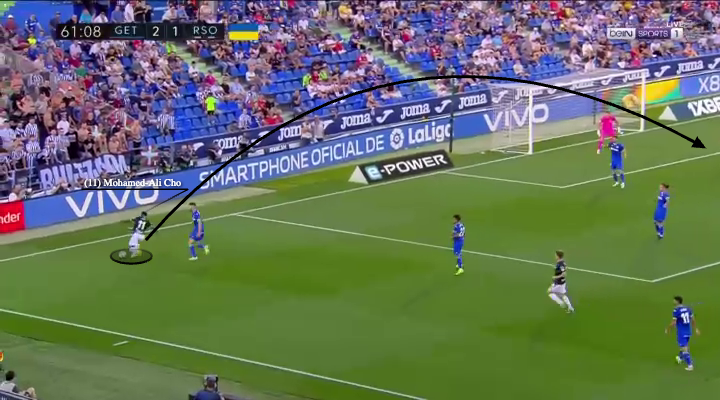
With the small touch to change direction — and also the dictation of timing as he initiated the move — Cho was able to shake the defender off, creating some room for a cross. This was an amazing piece of work because the burst and sudden generation of speed over the small distance and short timing could hardly be developed via training; they were the talents of a player.
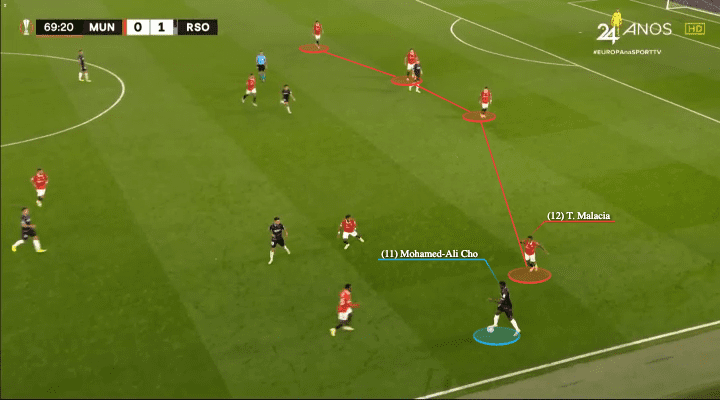
Cho’s dribbling techniques were applicable on both flanks. For example, against Manchester United, we saw another scene when he attacked Tyrell Malacia very well. Again, the first image shows Cho receiving the ball in a seemingly closed body position, but that was his deception technique. He always intended to use this kind of receiving segment to invite the wide defender to press and so he could see the direction of engagement and counter-act.
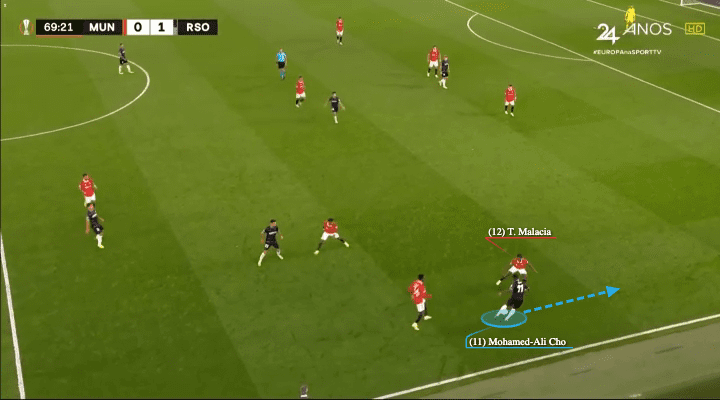
Cho’s next action, unsurprisingly, was a touch and a quick turn that gave him a wider angle — for both seeing the pitch and room to carry the ball. As Malacia came out and closed down, Cho looked like he would go to the byline with a heavy touch and outpace the left-back.
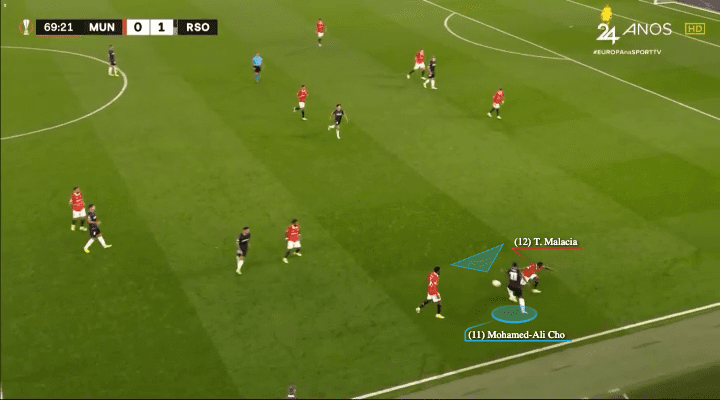
Malacia wasn’t stupid, he did try to cover that direction, but then he would get found out being caught by Cho. The young attacker read Malacia’s intention and body orientation in advance, and now he simply directed the ball infield to an even greater angle. The sharp change of direction was another great thing from Cho, he had dancing feet and good body coordination as the foundation of these actions. Malacia was completely beaten in the 1v1.
Fitting into Alguacil’s game model
Now we know Cho is a player who possesses talented dribbling, but modern football is more than a show of an individual. Instead, more coaches are expecting team players who could integrate into the game. The “weird” thing about Cho is that he is a flank player, but Sociedad’s 4-D-2 doesn’t have room for a winger. Still, Alguacil manages to utilise his players well enough. When it comes to Alguacil’s ideas, we separated Cho’s functional roles into two parts (ball progression and final third actions) to explain.
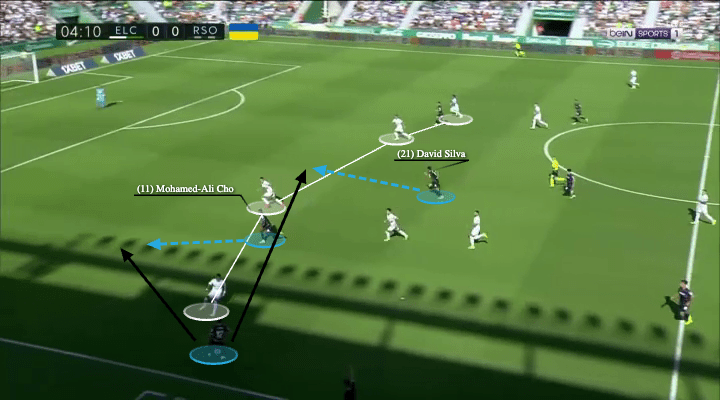
Firstly, Alguacil never restricted Cho’s 1v1 ability, and he would even encourage Cho to do more on the flank. When Sociedad attack from the outside, their strikers always search for a run behind depth from inside-out. So Cho was given a more central position in the beginning but then drifted outside to see if he could beat the defender with his quality.
For example, in this scene against Elche, Aihen Muñoz received out wide and Cho dashed behind the right-back from the centre. The run would bring the central defender out, or simply force a conundrum — follow Cho’s run or not? If the centre-back went with Cho, the 10 (David Silva) would be receiving centrally and if not, there was lots of space for Cho to exploit or even carry the ball into the penalty box.
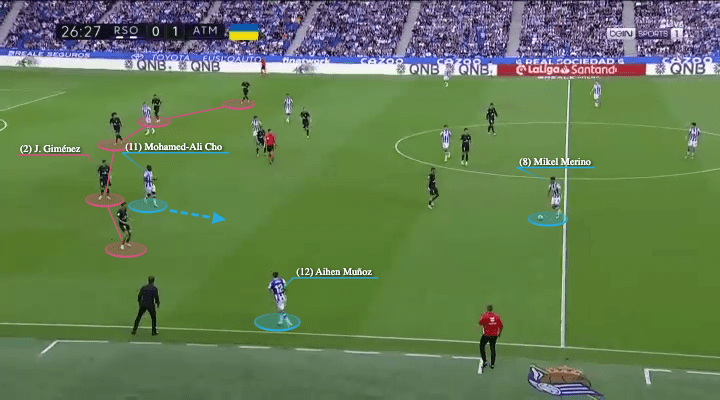
Sometimes, Sociedad came with some rotations in the construction, and Cho could be a very functional player to give the team dynamism. For example, Mikel Merino, the 8, might drop out to receive so Muñoz was pushing higher and wider. This scene was against Atlético’s back five and now, Cho should be engaging José Giménez by position.
Initially, Cho was dropping out to pick up the ball, but then the question would be Sociedad having too many options for Merino between the lines but no one was behind the defenders. Then, the centre-backs would be able to close that surface easily.
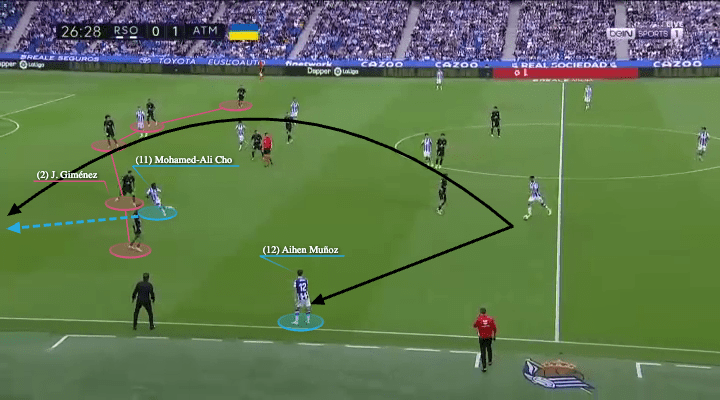
That drop was nothing more than deception from Cho because the intention of that move was not to receive the ball at feet, but rather to pull the defender out of position. Here, as Giménez tried to close Cho and came out, Cho already angled his body for a run behind the defence before his marker was able to react. Then, with his pace, he would be receiving with seconds of an advantage. So, tactically, Cho and Muñoz were able to create dynamism for the team by giving one short and one long option for Merino to play forward.
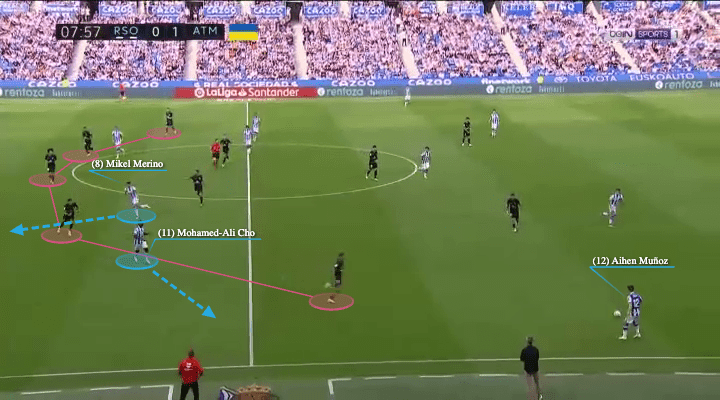
Since Cho is a player with quality, opponents are willing to commit and sometimes he might not be the person going behind. Instead, as Cho’s movements differed, other possibilities of play also opened up in the process.
For example, this image demonstrates another Sociedad attack as Muñoz received deep. Instead of going behind the last line, Cho took advantage of space behind Marcos Llorente, who jumped out to push Muñoz. And so, Giménez moved out wide to close Cho too, and now Merino could run into the channel in behind, which was the long option. This variant shows how Sociedad attacked with the same concepts but in different ways.
In the last third & chance creation
As Cho was a wide player, Sociedad also tend to release him down the touchline, and they’ve developed a way of attacking the goal with that.
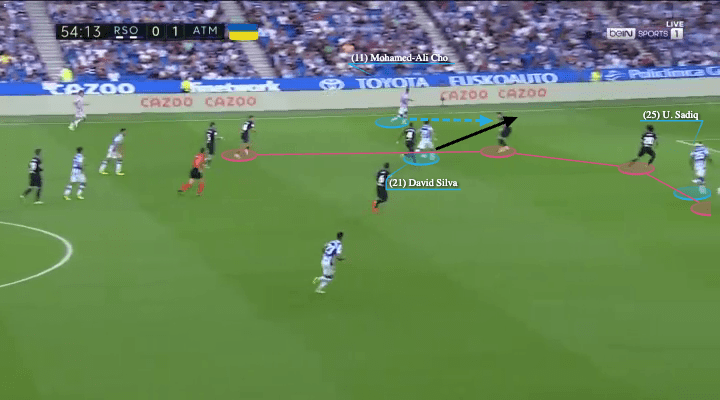
The foundation was still a 4-D-2 — when Cho drifted away from the central position to the outside, his partner would be more patient and wait for the chance to come to finishing areas. Their goal vs Atlético came exactly from that, then in the UEFA Europa League game, we also saw they created a chance to attack United in the same way.
Firstly, Sociedad liked to connect their 10, Silva, who was very competent in tight areas, then El Mago could find the outside player (Cho).
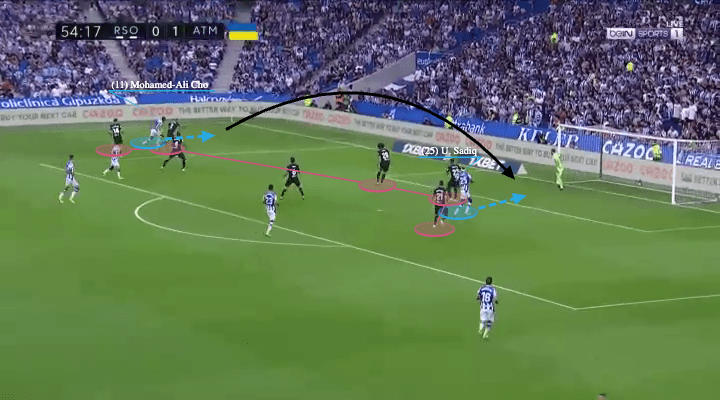
As Cho received on the outside, he would use all skills in his toolbox to beat the defender, and because he was good on the ball, the opponents tend to commit more numbers around that area. When they were overcommitted, spaces in the centre of the box were vacated. For example, both Llorente and Giménez of Atlético were out and Axel Witsel was also wider to cover, the Atlético last line inclined to the flank.
As a result, Reinildo Mandava was the only player exposed in that central area against the cross, and it was too much for him to handle Sadiq. As the data viz showed, Cho is capable of providing good deliveries and this was one of his assists so far.
Conclusion
As our scout report has highlighted, Cho is a young player with loads of potential to develop. The defenders handling Cho would have a hard time because he possesses good techniques in deceptions, quick runs, and dribbling.
He is not a selfish player who thinks solely for himself; we’ve seen that Cho is also a team player who can fit into Alguacil’s tactics. Now, with Umar Sadiq ruled out until the end of the season, Sociedad will surely be counting on Cho’s quality in the offensive game.

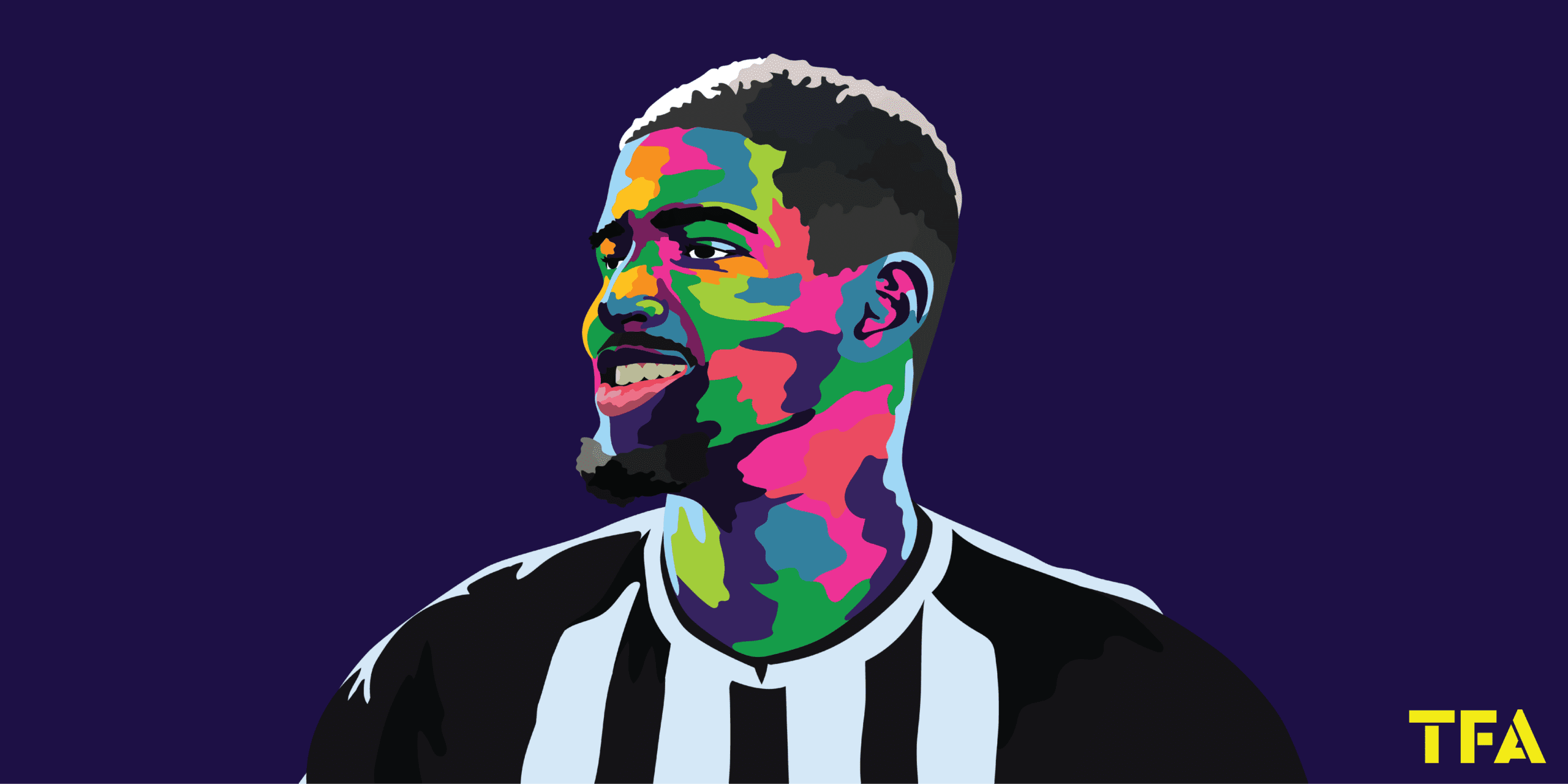


Comments